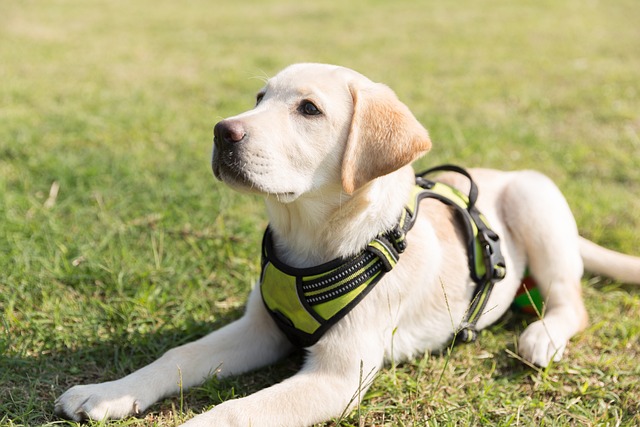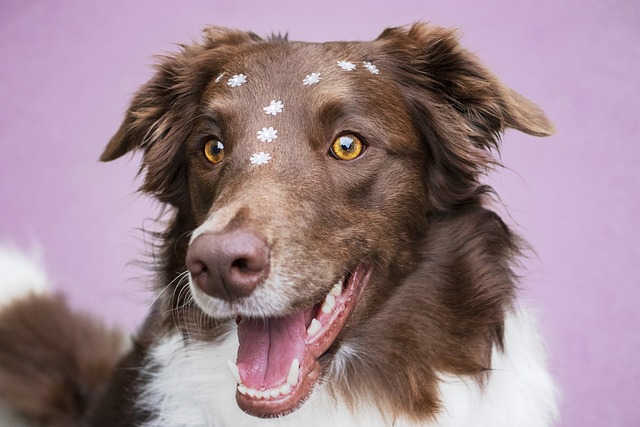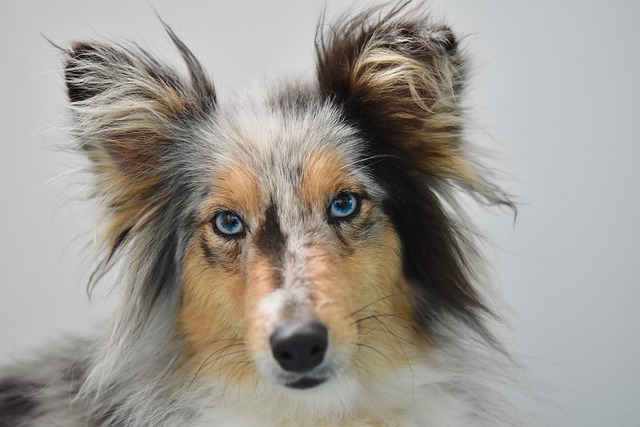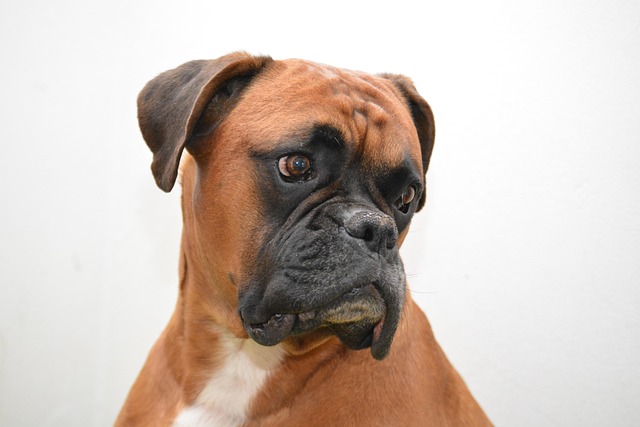
How to tell if a dog is retaining fluid?
When we stroke the soft fur of dogs, watch them wag their tails happily, and enjoy the warm time together, our hearts are always filled with happiness.
When you happily bring a fluffy Labrador puppy home, looking at its round eyes and wagging tail cheerfully, your heart is filled with beautiful visions of the time you'll spend together in the future. You accompany it as it grows up bit by bit. It's lively and active, always running around the house full of energy, bringing you endless joy. However, as time goes by, you may have a faint worry: At what age will this lovely Labrador start having joint problems? This question is like a small cloud, quietly hovering over the hearts of every Labrador owner.
Labrador Retrievers, as a very popular dog breed, with their gentle personalities, high intelligence, and excellent companionship abilities, have become the ideal pets for many families. But it cannot be ignored that during their growth process, joint problems are a major health concern that needs to be focused on. Generally speaking, Labradors may start to experience joint problems around the age of 5 - 7. However, this is not absolute. Some Labradors that are overweight, have unreasonable exercise patterns, or are affected by genetic factors may show joint abnormalities even at a younger age, perhaps as early as 3 - 4 years old.
From a genetic perspective, the joint problems of Labradors have a certain degree of heritability. If their parents or ancestors have joint diseases such as hip dysplasia and arthritis, then the probability of puppies inheriting these problems is relatively high. Hip dysplasia is one of the common joint diseases in Labradors. It is a disease characterized by abnormal development of the hip joint structure, which can cause the joint socket and femoral head of the hip joint to not fit closely together. As the dog grows, joint wear and tear intensifies, eventually leading to pain and movement disorders. Just imagine that a once lively and active dog, due to hip dysplasia, experiences pain with every step and can no longer run and play to its heart's content as before. As the owner, how heart - broken you must be.
In addition to genetic factors, the postnatal living habits and environment also have a significant impact on the joint health of Labradors. Overweight is a major "culprit" leading to joint problems. Labradors are naturally enthusiastic about food and can easily gain weight due to overeating. When their weight exceeds the normal range, the pressure on their joints will increase significantly. With every step they take, their joints have to bear the extra weight. Over time, the wear and tear of joint cartilage accelerates, and the risk of joint inflammation also rises. For example, the joints of a Labrador of normal weight can easily support its body movements. But if it is 10 pounds overweight, it's equivalent to a person walking around with a 10 - pound weight on their body every day. The burden on the joints is imaginable.
 Unreasonable exercise can also cause damage to the joints of Labradors. Labradors are energetic dog breeds and need sufficient exercise to burn off energy. However, if they exercise excessively, such as long - term high - intensity running or frequent up - and - down stair climbing, their joints will be over - worn. Especially during the puppy stage, when the bones and joints are still developing, excessive exercise may affect the normal development of the joints and lay a hidden danger for future joint problems. Conversely, if the exercise amount is insufficient, the muscles around the joints will not be fully exercised and cannot provide sufficient support and protection for the joints, which also increases the risk of joint injuries.
Unreasonable exercise can also cause damage to the joints of Labradors. Labradors are energetic dog breeds and need sufficient exercise to burn off energy. However, if they exercise excessively, such as long - term high - intensity running or frequent up - and - down stair climbing, their joints will be over - worn. Especially during the puppy stage, when the bones and joints are still developing, excessive exercise may affect the normal development of the joints and lay a hidden danger for future joint problems. Conversely, if the exercise amount is insufficient, the muscles around the joints will not be fully exercised and cannot provide sufficient support and protection for the joints, which also increases the risk of joint injuries.
So, what are the manifestations when we find that a Labrador has joint problems? In the early stage, the dog may only show a slight limp after activity and return to normal after a short rest, which is very easy to be overlooked by the owner. As the condition progresses, the dog may show symptoms such as reluctance to move, difficulty in going up and down stairs, slow getting - up, and joint swelling. When we see the dog having trouble moving due to joint pain and the once - lively dog becoming listless, our hearts are filled with worry and anxiety.
Facing the possible joint problems of Labradors, how can we prevent and deal with them? In terms of diet, we should strictly control the dog's weight, choose high - quality dog food that is nutritionally balanced and suitable for its age and weight, and avoid over - feeding high - calorie and high - fat foods. We can appropriately supplement the dog with some nutrients beneficial to joints, such as glucosamine and chondroitin, which help maintain the health of joint cartilage and reduce joint wear and tear. In terms of exercise, we should formulate a reasonable exercise plan according to the dog's age and physical condition. During the puppy stage, avoid overly strenuous exercise and mainly focus on walking and simple play. After reaching adulthood, the exercise intensity and time can be appropriately increased, but also pay attention to avoiding long - term high - intensity exercise, such as long - distance running like a marathon. At the same time, provide the dog with a comfortable and soft resting environment, and avoid letting it sleep directly on the cold and hard ground to reduce the pressure on the joints.
If unfortunately, we find that the dog already has joint problems, don't panic. Take the dog to see a veterinarian in a timely manner for a comprehensive examination and diagnosis. The veterinarian will develop a personalized treatment plan according to the specific situation of the dog, which may include drug treatment, physical therapy, rehabilitation training, etc. During the treatment process, we should give the dog more love and patience and accompany it through this difficult period.
The joint health of Labradors is related to their quality of life and happiness index. As owners, we should always pay attention to their physical conditions and start from the little things in daily life to prevent the occurrence of joint problems. When they really face joint problems, we should use love and professional knowledge to support a warm sky for them, so that they can still spend every day happily with our company. Because what they give us is unreserved love and companionship, and we should give them the most attentive care.

When we stroke the soft fur of dogs, watch them wag their tails happily, and enjoy the warm time together, our hearts are always filled with happiness.

When we see the dog squatting in the corner, straining hard but having difficulty defecating smoothly, and its originally lively eyes full of discomfort and helplessness,

When we lovingly place delicious wet food in front of the dog and watch it feast and enjoy the happiness brought by the food, our hearts are filled with comfort.

When we see our dogs wagging their tails lively, we are filled with joy and warmth. However, behind the health of dogs, there are various disease threats, among which fungal diseases are one of them that cannot be ignored.

When the owner finds that the abdomen of the dog that is usually lively and active gradually bulges, moves slowly as if holding a water bag, and even begins to have symptoms of shortness of breath and loss of appetite,

When we take our dog to get vaccinated, we think we've built a solid defense line for its health. But soon after, it shows symptoms of diarrhea and vomiting,